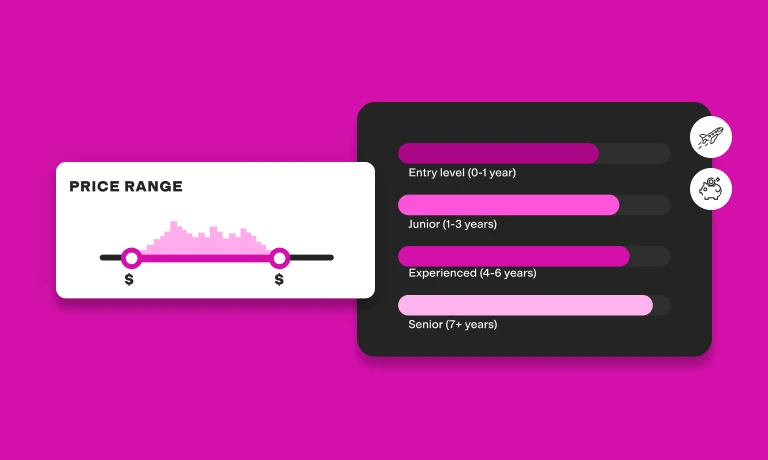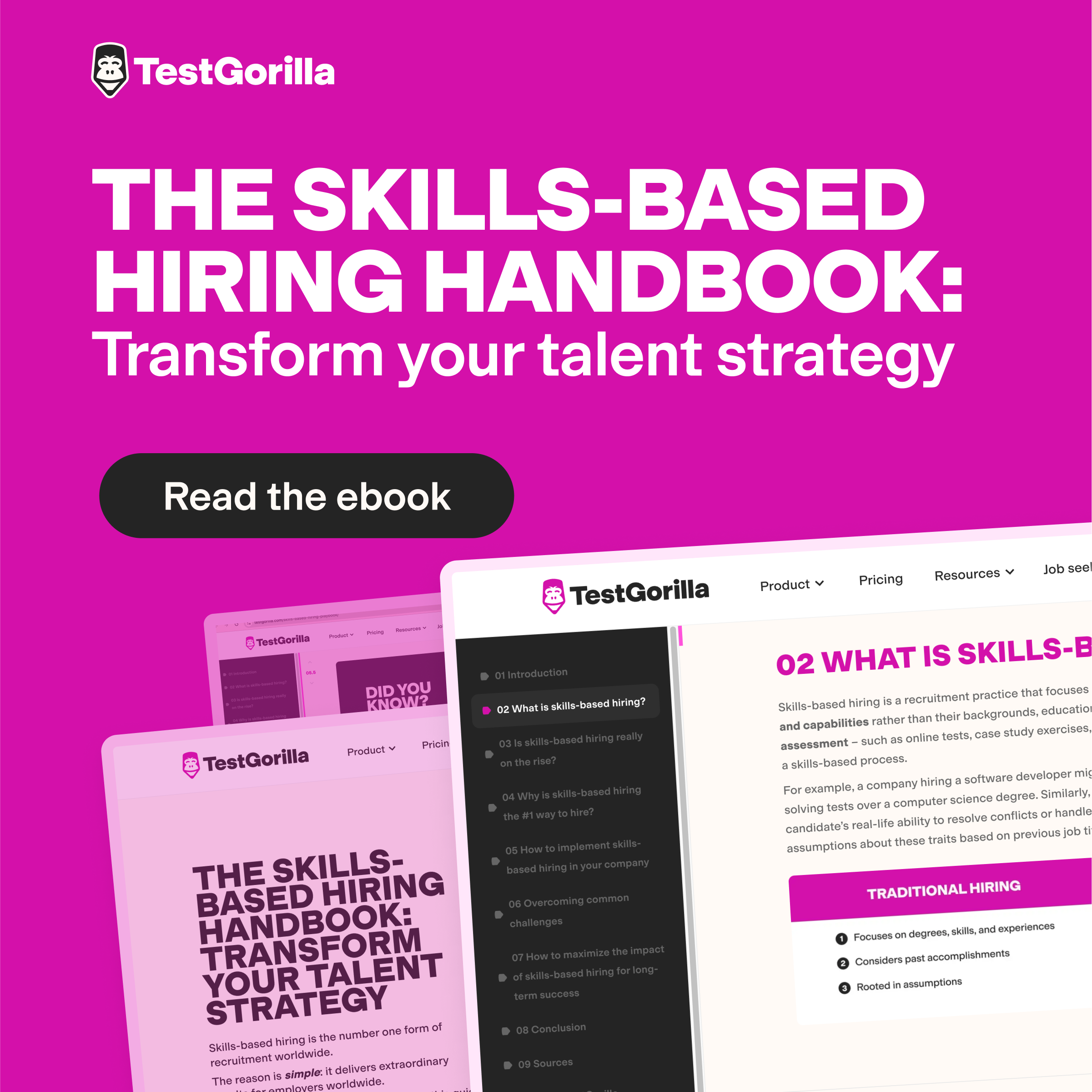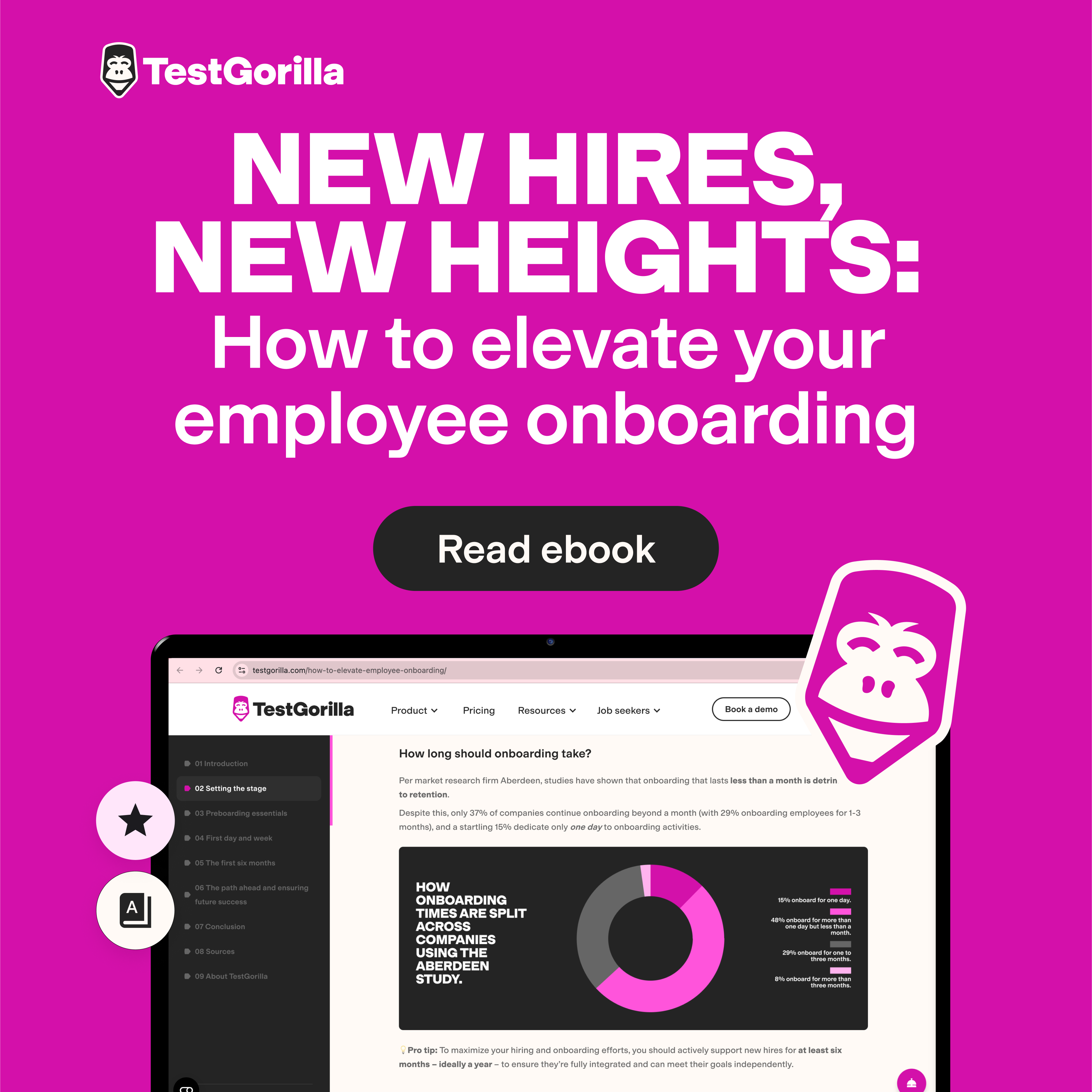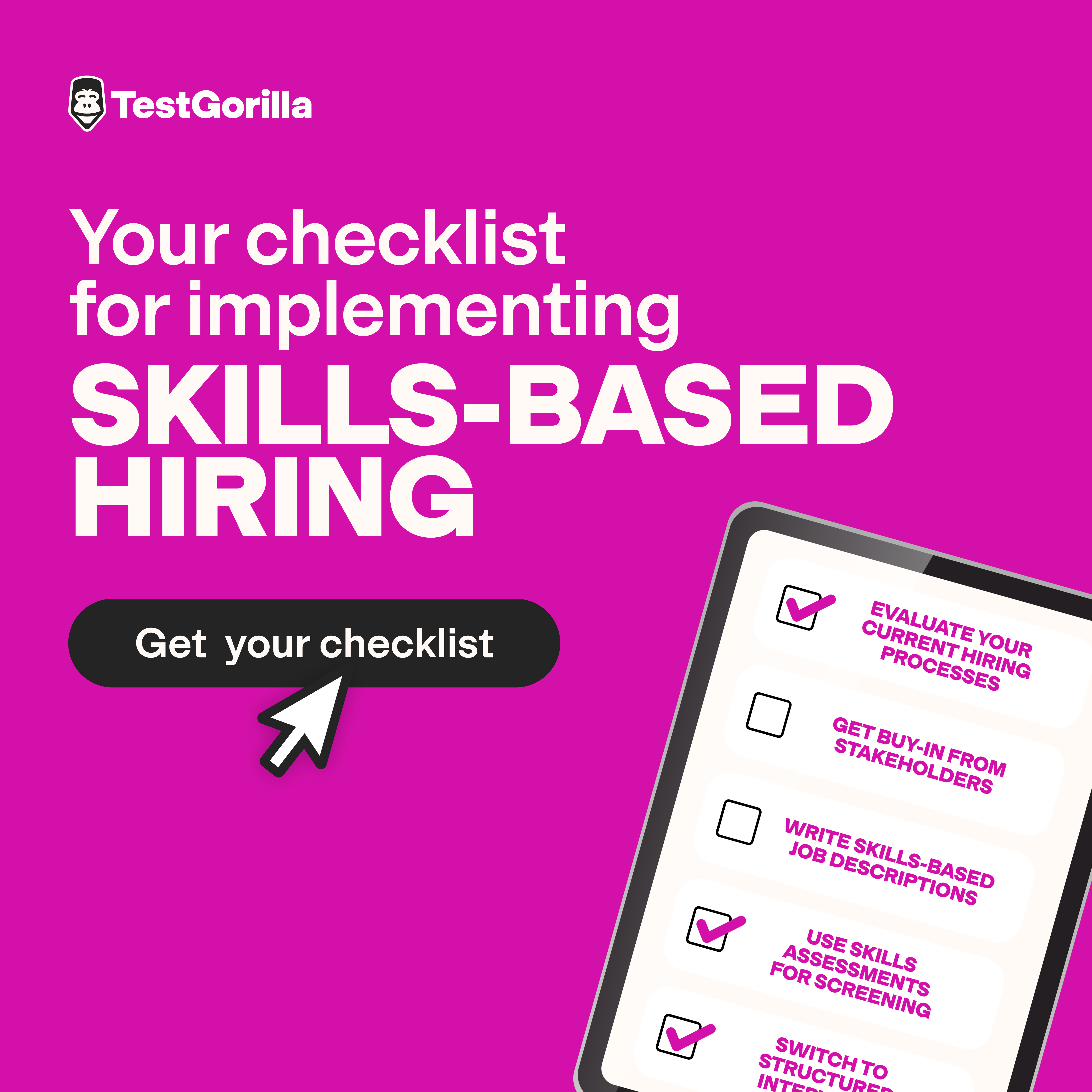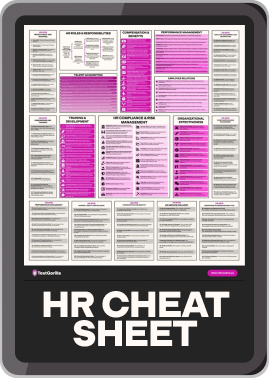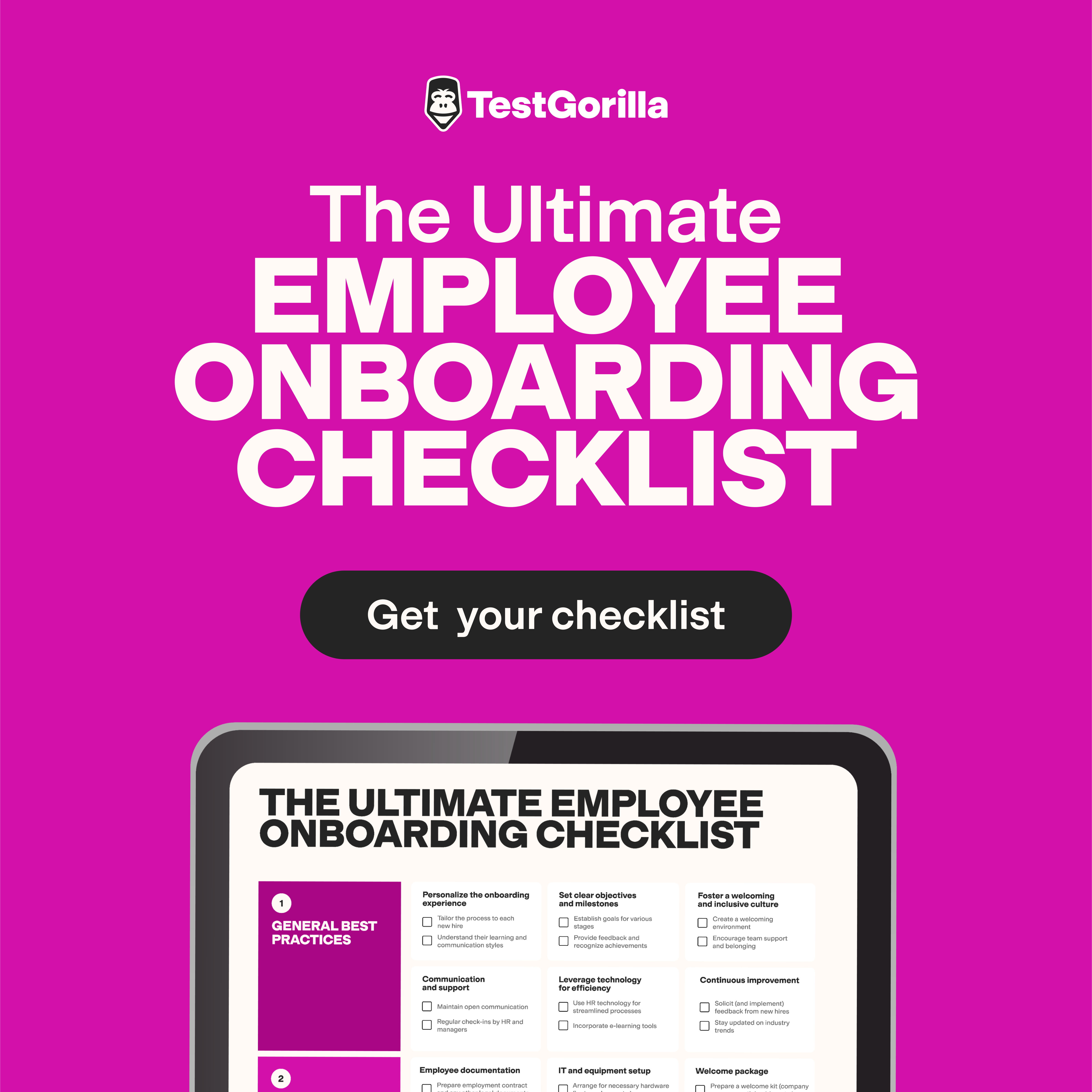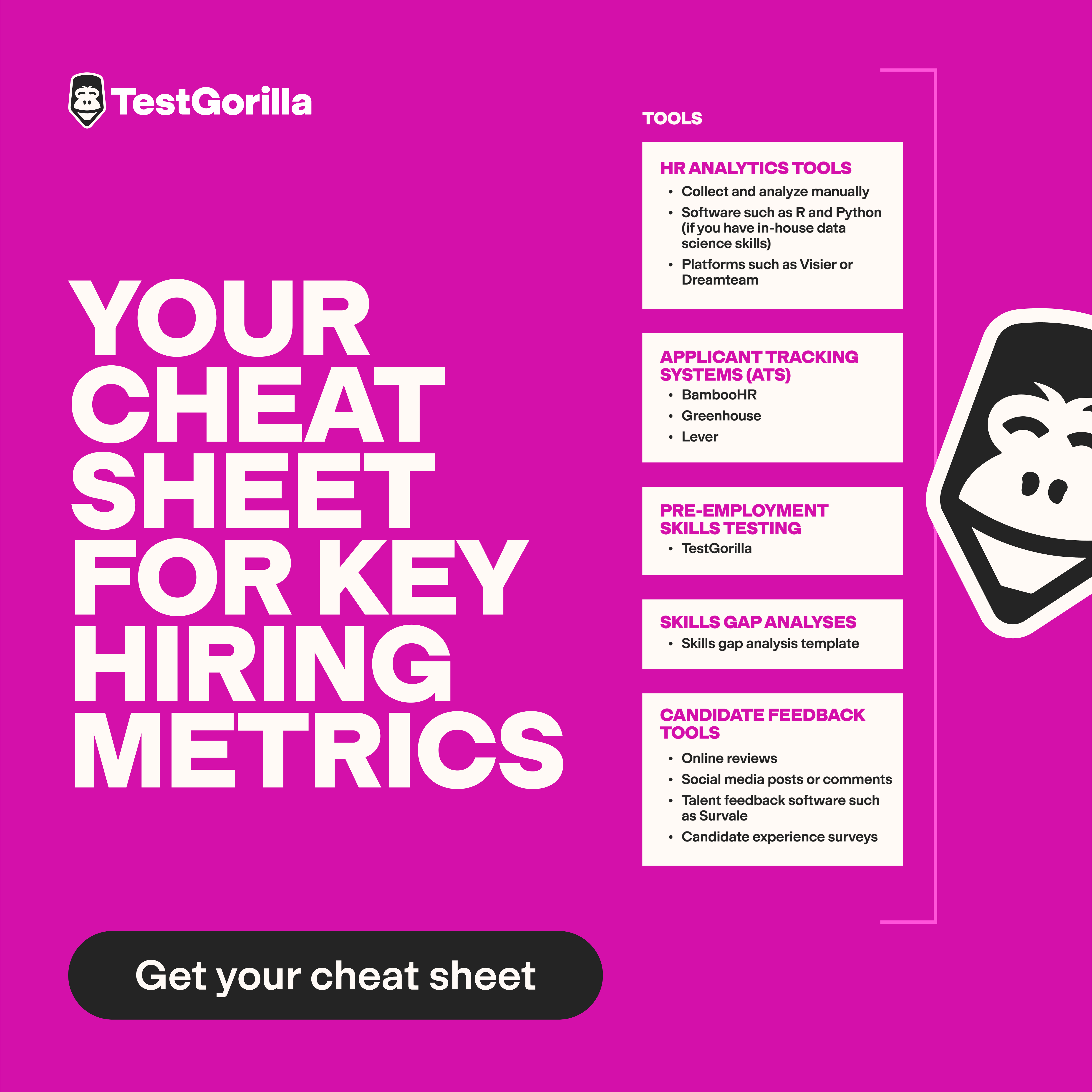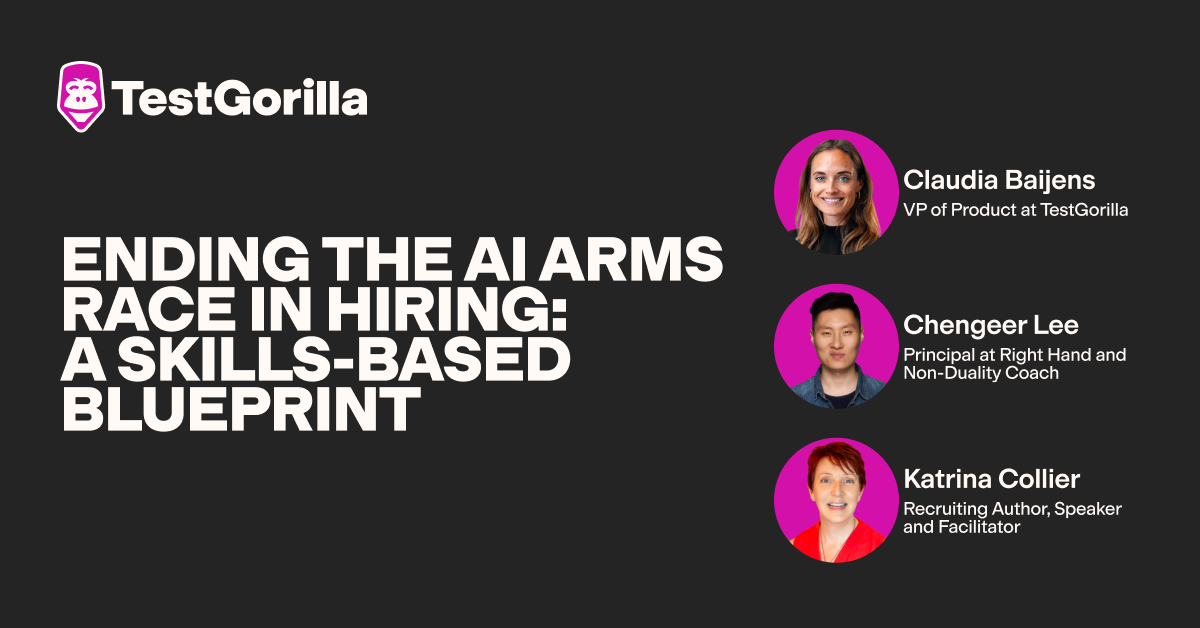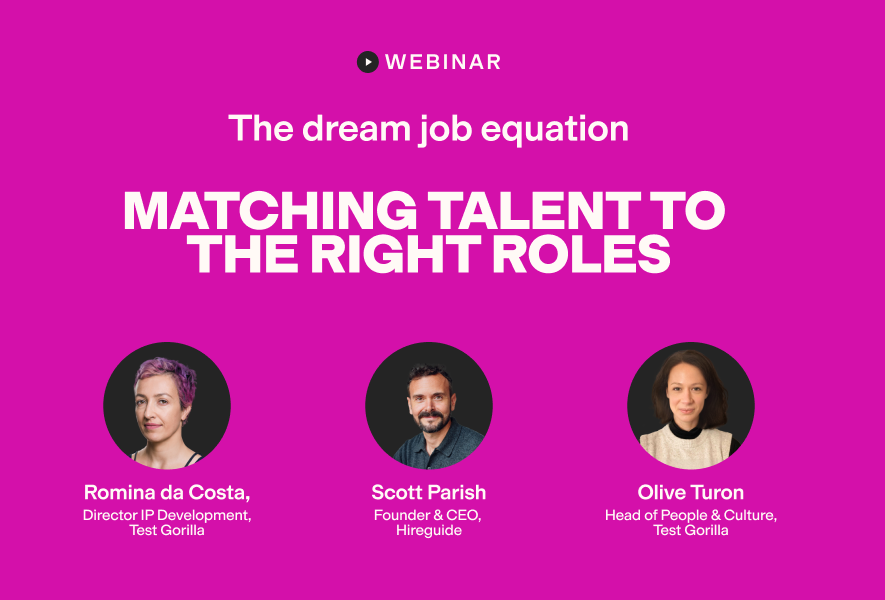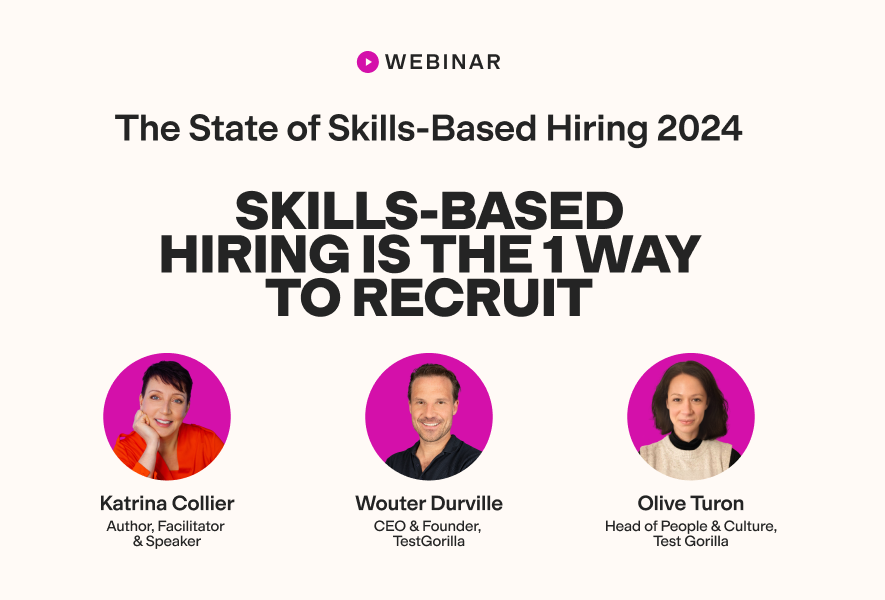Talent shortages and fast-changing job markets have forced employers to rethink how they hire. Several new ideas have taken center stage in this shake-up: gig work, AI recruiting, skills-based hiring, and now micro-credentials.
Below, I help you understand what micro-credentials are, why they're gaining traction, and how to use them thoughtfully so you can make strong hiring decisions, stay ahead of the curve, and avoid falling into some common traps.
Table of contents
- What are micro-credentials?
- Micro-credentials are blowing up
- Why do job seekers love micro-credentials?
- Why are employers jumping on the micro-credential bandwagon?
- Micro-credentials are a stepping stone to skills-based hiring
- Caution: Use wisely, not blindly
- Combine skills tests with micro-credentials for the best results
What are micro-credentials?
Micro-credentials are bite-sized learning programs that help job seekers build very specific skill sets quickly. Unlike broader learning programs like degrees, diplomas, or certificates, micro-credentials typically zero in on one topic or skill – think data visualization, email marketing, or TypeScript basics.
Here’s how micro-credentials compare with other qualifications.
Type | Time to complete | Focus | Cost |
Degree | 3-4 years | Broad (e.g., bachelor’s degree in marketing) | High |
Certificate | 6-12 months | Moderate (e.g., professional certificate in social media marketing) | Medium |
Micro-credential | A few hours to a few months | Narrow and specific (e.g., micro-credential in building Instagram campaigns) | Low |
Importantly, micro-credentials are stackable. This means someone can combine multiple micro-credentials over time to build a larger qualification, like a certificate, diploma, or degree. Some colleges and platforms even count these programs as credit toward future learning. For instance, the University of Maryland Global Campus accepts certain Google certificates for college credit.
People can earn micro-credentials – sometimes recognized through “digital badges” – through universities, employers, third-party workshops, or industry-backed platforms like Coursera, Udemy, and LinkedIn Learning.
Micro-credentials are blowing up
Udemy – one of the biggest online learning platforms – acquired eight million new users in 2024, ending the year with 77 million users, compared with 69 million at the end of 2023.
And Coursera’s Micro-Credentials Impact Report 2024 found evidence of major acceleration in the adoption of micro-credentials in more than 850 higher education institutions across nearly 90 countries.
Additionally, another Coursera survey showed that 90% of students believe a micro-credential will help them stand out in the recruitment process, while 76% of employers admitted they were more likely to hire candidates with micro-credentials.
There’s no doubt that micro-credentials are gaining popularity among candidates and employers. But why?
The best insights on HR and recruitment, delivered to your inbox.
Biweekly updates. No spam. Unsubscribe any time.
Why do job seekers love micro-credentials?
Let’s take a closer look at why candidates are becoming increasingly obsessed with micro-credentials.
1. Not everyone can afford a college education
Going to college has always been, and continues to be, a privilege that’s not accessible to everyone. With the rising costs of education, people from high-income backgrounds and affluent families are much more likely to afford college than others.
If that doesn’t seem unfair enough, let me drop another truth bomb: This lack of access is more prevalent in people with diverse backgrounds. For example, one study found that only 34% of Black adults have associate degrees versus 50% of White adults.
“Too many Americans see our society and economy as profoundly unfair, set up to serve the needs of well-connected elites and providing more benefits to people who went to college or know how to work the system.” - The New York Times.
Micro-credentials are significantly more affordable than college, making it easier for non-degreed candidates to gain the skills they need, demonstrate those skills to employers, and land jobs.
And guess what? These credentials work.
A 2024 study looked at employment outcomes for more than 800,000 non-degreed learners from developing countries who completed short courses on Coursera. Those who shared their credentials with employers generated more interest and were more likely to report new jobs within a year.
2. Even graduates learn real-world skills through micro-credentials
College graduates still have the upper hand when it comes to employability and pay, according to Pew research.
So, why are college students bothering with micro-credentials?
The Strada Institute for the Future of Work analyzed the employment history of millions of graduates and found that more than half weren’t using their degrees in their day jobs.
My take? Degrees are just too broad to dive into the everyday skills used in a workplace. There’s a whole genre of jokes on the internet poking fun at how traditional education teaches advanced or abstract topics but skips over basic life and work skills.
Micro-credentials can give graduates real skills they’ll use at work. A recent Coursera survey found that of 5,000 students across the globe, 86% agreed that a micro-credential would help them succeed in a job. In fact, students were 76% more likely to enroll in degree programs that offered industry micro-credentials.
3. Micro-credentials support career-switching
Previous generations have idealized a traditional career path – go to school, get yourself a college degree, secure a stable job, and climb the career ladder.
But millennials and Gen Z workers have turned this notion on its head by prioritizing fulfillment over predictability. They’re opting for non-linear career paths where they can change their journey in line with evolving interests, values, and life circumstances.
One survey found that nearly half of workers had switched careers at some point, typically at around 39 years old.
That said, many employees struggle to change careers because their skill sets are limited to their degrees or professional backgrounds, and employers aren’t giving them the right opportunities to make the switch.
Micro-credentials bring them out of this box they’ve felt stuck in. They can learn virtually any topic, at their own pace, and make the moves they’ve been dreaming about.
“Micro-credentials are launching pads for a non-traditional career path. They make it so much easier to pick up new skills and pivot without having to start from scratch.” – Yashna Wahal, HR and hiring expert
Why are employers jumping on the micro-credential bandwagon?
Here’s why employers are turning to micro-credentials to hire, train, and retain employees.
1. They’re more reliable than resumes
While resumes are a core part of traditional hiring practices, more and more employers are questioning their use.
One reason? Many candidates add “white lies” to their resumes, often exaggerating skills, using keywords that don’t align with their experiences just to trick the system, or outright fibbing about their accomplishments. Research shows that 70% of candidates have admitted to lying on their resumes.
The result? Employers are leaning on unreliable information to make high-stakes hiring decisions. In our The State of Skills-Based Hiring Report 2023, we found 87% of employers struggled with using resumes because they couldn’t ascertain their accuracy or verify candidates’ skills and abilities.
Micro-credentials have helped solve some of these problems. Although micro-credentials don’t tell you how good someone is at something, they give employers proof that candidates have studied certain skills. Plus, employers can see when an applicant completed the credential, which helps ensure the skills learned are relevant.
2. Today’s capabilities might be pointless tomorrow
The World Economic Forum’s (WEF) latest Future of Jobs report (2025) found that:
Nearly 39% of employees’ existing skill sets will transform or become outdated by 2030.
If the world’s workforce were 100 people, 59 would need retraining in the next five years.
63% of employers say skills gaps are the biggest barrier to business transformation.
AI and big data are the fastest-growing skills, followed by networks and cybersecurity, and technology literacy.
All things considered, the skills employees have today might be completely pointless in just a couple years.
You can’t send people back to college for more four-year degrees, and it’s unrealistic to lay off your entire workforce and lose a substantial amount of institutional knowledge (not to mention your reputation).
The expected disruption of 39% of skills I mentioned above is actually down from 44% in the WEF’s 2023 Future of Jobs report. Much of this has been attributed to the fact that 50% of workers have upskilled or reskilled since then.
Your best bet as an employer? Upskilling and reskilling your workforce – and hiring employees with skills of the future (including those with relevant micro-credentials).
This strategy is sound, and micro-credentials are paving the way for quick and effective skills development, keeping companies agile and adaptable to the changing landscape.
How so?
According to a recent Forbes piece, since these courses are small, specific, affordable, and accessible, they instantly help companies address skills gaps.
Another WEF report explained that the rise of tech, such as AI-powered personalized coaching and virtual reality – is enhancing micro-credentialing by improving the rate at which learners acquire new skills. This can make them job-ready in a matter of weeks.
Immersive learning collaborations with top colleges and platforms are also helping learners engage with concepts more deeply rooted in the real world.
Finally, although they’re used for a wide range of skills, micro-credentials are perfect for digital and technical skills such as AI and cybersecurity. According to WEF, these are the most coveted skills over the next five years, so hiring for them now can help to set you up for success.
3. Employers can get really granular and strategic with training
Micro-credentials enable you to align employee training with your company’s existing tasks, functions, and tools at a very precise level. For example, a quick course in Meta or AWS (Amazon Web Services) can teach workers the exact practical skills they need to use these platforms at work.
This is much better and more efficient than putting them through a long-term certification, which teaches them a bunch of skills they don’t really need at the moment. By targeting specific skills gaps, these credentials boost productivity while reducing training time.
I saw an example of this with the International Baccalaureate Organization (IB), which now offers very specific micro-credentials for educators – for instance, in metacognition and student well-being – which are super relevant today and help IB educators stay ahead of the curve.
Some companies even use these mini-courses methodically over time to make strategic moves. For instance, in one article, Teri Shern, co-founder of Conex Boxes, shared –
“We mainly use micro-credentials when we have the goal of moving an employee into a higher-up and much more complex position over a certain period of time, especially when we have an estimated time period for the person already in that role to move up to.
“It’s almost like a training program with a number of different levels, ultimately helping the employee to achieve success in multiple areas before finally being ready to take over the role we expect them to.”
4. Satisfied employees mean better retention
One study by Amazon showed that almost 75% of millennial and Gen Z workers planned to quit their jobs, citing “a lack of skills-building opportunities” as the reason.
Meanwhile, research by Udemy debunked common myths around Gen Z being “lazy” and “not interested” by showing that they’re more motivated by professional development (65%) than older generations.
Micro-credentials provide an easy way for employers to offer growth and mobility opportunities – must-haves for the younger generation. This leaves you with employees who are happier and more likely to stay with your company for longer.
Micro-credentials are a stepping stone to skills-based hiring
Hiring teams using a skills-based approach focus on candidates’ real-life skills and capabilities – rather than their backgrounds and education – when making hiring decisions. For instance, you might test candidates’ skills through online assessments, role-plays, or practical tasks instead of hiring them for their fancy Ivy League degrees. A true skills-based hiring approach even removes degree requirements for roles where degrees are truly necessary.
In our latest The State of Skills-Based Hiring report, we found that:
68% of job candidates prefer skills-based hiring
84% felt it removes biases from the hiring process
90% believe it’ll help them secure their dream job
And it’s not just candidates who want it.
Employers dig skills-based hiring – but some still focus too much on degrees
Research suggests that many global companies like Google, IBM, and EY, and some state governments have openly discussed removing college degree requirements from job listings and are pushing for a fairer skills-based approach.
In addition to boosting diversity, a skills-first approach opens the doors to a larger number of skilled candidates, widening talent pools.
Another survey by Hays, a recruitment company, found that nearly 50% of 15,000 employers claimed college degrees weren’t important in hiring.
Despite this, a report by the Burning Glass Institute found that 45% of employers that removed degree requirements from job listings made no real change to how they hire, still favoring graduates over non-degreed peers.
Micro-credentialing is catalyzing skills-based hiring
According to the American Association of Colleges and Universities (AAC&U) survey, almost 70% of employers said they’d prioritize hiring a college graduate with a micro-credential over a graduate without one. This points to a shift in mindset: that college degrees alone aren’t enough to validate candidates’ skills.
In fact, some academic institutions, like the University of Texas, have integrated micro-credentials into their degree programs to produce graduates who are both “broadly educated and specifically skilled.”
Degree-based hiring is deeply ingrained in the recruitment world. Employers aren’t ready to give it up entirely – not yet, at least.
Micro-credentials are the sweet spot between traditional degree-based hiring and the future, which I am certain is a skills-based future. They aren’t degrees, but they’re still considered “education,” giving employers a sense of comfort in their selection decisions. Plus, they’re genuinely better for verifying candidates’ skills and competencies than degrees are, leading to better hiring decisions.
Caution: Use wisely, not blindly
Micro-credentialing is a big step in the right direction, but it’s not a silver bullet. Many employers are relying on micro-credentials as stand-alone proof of ability. I think this is problematic because micro-credentials come with blind spots that could land you in trouble.
They’re not free from bias
One big problem with degree-based hiring is biases. For instance, decision-makers might select candidates from prestigious colleges or their own alma mater over others who may be better suited to the job.
While micro-credentials equip candidates with the specific skills needed for a role, recruiters could still have platform or brand bias, where they shortlist someone just because they completed a course with Google or Meta, versus, say, a regional training provider.
They don’t measure soft skills or culture fit
Candidates can take a nano course in resilience, leadership, or communication. But a digital badge isn’t proof that they can demonstrate these traits in the real world.
Imagine hiring someone who’s earned an emotional intelligence digital badge but still struggles to handle conflict or provide feedback supportively. Or selecting a leader who’s completed a course in change management but has an authoritative leadership style that doesn’t go with your culture.
They don’t always predict job performance
While micro-credentials are skills-specific, they’re not company-specific. So even if someone learns how to use Google Ad Manager or code in TypeScript, they might not be able to use these skills for your company’s specific tasks, goals, brand voice, etc. The skills someone learns might ultimately be irrelevant to your company.
A few employers feel very strongly about this. In one article, Hosea Chang, Chief Operating Officer at Hayden Girls, expressed –
“The types of skills that these micro-credentials seek to verify are usually aspects of the business world that you learn from on-site training, which is far more effective than relying on a third party to verify these skills.”
Chang would “rather have control over what and how a person is learning when it comes to micro-tasks.”
My top tip? Use micro-credentials alongside objective skills testing for an accurate picture of candidates’ hard and soft skills, cognitive abilities, attributes, values, and more to avoid falling into the above traps.
Combine skills tests with micro-credentials for the best results
Micro-credentials have been a game changer in a hiring market fraught with talent shortages, widening skills gaps, and growing pressure to prioritize diversity over degrees. They’re giving candidates chances to learn and demonstrate skills. Plus, they help employers hire, train, and re-train employees for the exact set of skills they need, keeping them efficient, agile, and competitive.
Importantly, they sit somewhere between education and skills, setting employers up for a softer transition into a skills-based approach. Combining them with skills testing helps you avoid biases, puts learnings into context, and measures your candidates more holistically – setting you up for a future of strong hiring.
You've scrolled this far
Why not try TestGorilla for free, and see what happens when you put skills first.








